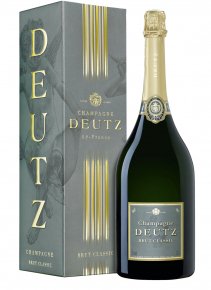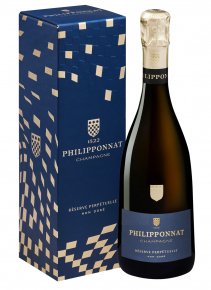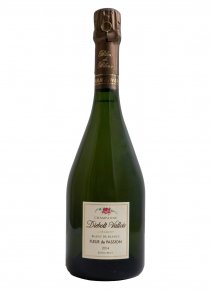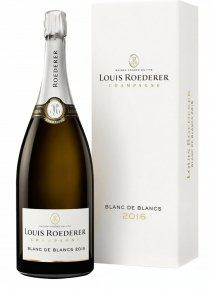All our magnums
The magnum: the best format for champagne!
The champagne in magnum is often considered superior to that in a standard bottle. Its large capacity allows for better maturation and preservation of the champagne. This results in more harmonious and complex wines. It is also a more festive format!
Discover our selection of magnums of champagne!
Why is champagne better in a magnum?
The champagne in magnum is often considered superior to that in a standard bottle, and for several reasons. Whether you are a champagne lover or a curious novice, understanding why the magnum is so popular can transform your tasting experience.
The magnum in Champagne: an emblematic format
Far and away the most emblematic bottle of Champagne after the traditional "champenoise" of 75 cl, the magnum of champagne contains a volume of 1.5 l, or the equivalent of 2 bottles. A true symbol of celebration, the magnum is often used during festivities. One naturally thinks of Formula 1 races, where the first three drivers on the podium spray their mechanics with champagne. The fact that magnums of champagne are used for these celebrations is no coincidence, since Reims has long hosted the French Grand Prix. Moët et Chandon has even been a long-time sponsor of the sport!
Better preservation and maturation
Beyond the simple festive considerations, this bottle size has real oenological qualities that have made it essential in vineyards around the world. The magnum is first and foremost recognized for its wine preservation qualities. Thanks to its capacity, the magnum of champagne allows for a more harmonious development of aromas, thus giving birth to more complex and mature wines.
Contrary to what one might think, the reason for this improvement is not so much in the bottle as in its cork. You may have noticed that, regardless of the size of a champagne bottle, from a half-bottle (37.5 cl) to a Methuselah (6 l) via a champenoise (75 cl) and a Jeroboam (3 l), all champagne bottles have a cork of the same size. It turns out that the evolution of a wine is, among other things, greatly conditioned by the exchange of air between the inside and the outside of the bottle, which is done through the cork. Therefore, with a cork of the same size for all bottles, the volume of air exchanged remains the same. One can thus understand the influence of the gas exchange on volumes of wine ranging from single to double or even more!
A visual and festive impact
For big occasions, the magnum creates an impressive visual effect. It attracts attention and adds a touch of grandeur to your celebrations. Whether it's for a wedding, a birthday, or a special evening, a magnum of champagne is always an elegant choice. With its 1.5 l, the magnum bottle of champagne will be perfect for your aperitifs with 6 guests or more. You can count up to 16 flutes for a magnum of champagne, or about 2 flutes per person.
How to serve a magnum of Champagne?
Ideal for wine preservation, the magnum of champagne is also perfect for all your festive moments. Be careful, however, to plan the service in advance. It is recommended to put the magnum in the refrigerator at least 24 hours in advance to allow the wine to cool down completely before serving it between 9 and 11°C.
Finally, it should be noted that a magnum is generally sold at a higher price than the equivalent of 2 bottles. This price difference is mainly justified by the low quantity of magnums produced by winegrowers, but not only. The production of the magnum bottle is more expensive than that of a standard bottle. This is even more true when it comes to a special bottle like that of the Cristal cuvée of the champagne house Roederer.
The magnum is undoubtedly the king of the cellar. With its ideal capacity, the magnum of champagne will allow you to age and improve your champagne in the cellar for many years. A sign of oenological quality, a bottle that guarantees optimal aging, a symbol of festive moments and sharing, the magnum of champagne is a true must of French know-how that we invite you to rediscover through our selection of 100% grower champagnes! You will find champagnes from all the great Champagne terroirs such as the Vallée de la Marne, the Côte des Blancs, and the Montagne de Reims, in Brut, Extra Dry, or Brut Nature versions.
All our magnums : good to know
| 🔢 Available products count | 147 |
|---|---|
| 🎨 Colour | White champagne, Rosé champagne |
| 🍾 Format | Magnum |
| ↕️ Dosage | Champagne brut, Champagne extra brut, Champagne brut nature |
| 🍇 Cépage | Pinot noir, Pinot meunier, Chardonnay |
| 📍 Terroirs | Montagne de reims, Cote des blancs, Vallée de la marne, Cote des bar, Cote de sezanne, Avize, Cramant, Grande vallée de la marne |
| ⭐ Vintage | Non vintage champagne, Vintage 2012, Vintage 2010, Vintage 2011, Vintage 2002, Annata 2013, Vintage 2015, Vintage 2019, Vintage 2016, Vintage 2014, Vintage 2020, Vintage 2021 |
| 💡 Type de champagne | Blanc de blancs, Blanc de blanc de pinot noir, Rosé de saignée, Blanc de meuniers |

























